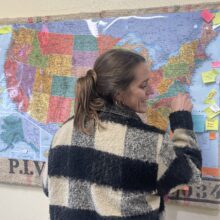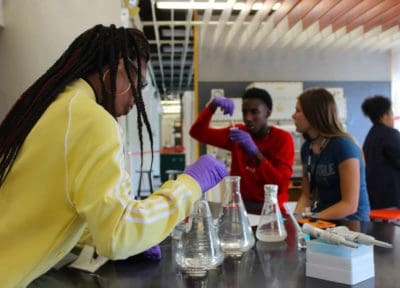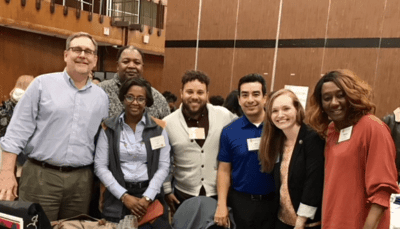Programs, camps, and schools all shift focus and structure over time. The degree of that evolution can vary depending on outside influences, say the environment, or inside influences, like a change in mission or goal.
Even the most firm of institutions are impacted at least gradually due to the inevitable sands of time. But 2020 has been a year that placed every company, organization, and institution in front of a shape shifting sandblaster — forcing all to rethink how they do and what they do.
In education, we saw districts deploying devices and hot spots, schools turn into virtual classrooms, bus drivers turn into sanitation heroes, school doors equipped with temperature screening kiosks, and dozens of other changes.
No one was excluded from having to think creatively in order to keep operating. Summer enrichment programs around North Carolina had to move quickly to figure out how they were going to keep offering opportunities to students. The Eastern North Carolina STEM (ENC STEM) summer enrichment program looked and listened to the most important element of their program, their students, and created an environment that allowed for both growth and respite, all online, during the COVID-19 pandemic.
Student leadership is key
Elaina Sabatine, executive director of ENC STEM, knows the program exists for STEM enrichment, but a key component of its continued success is student leadership.
“They are the voice in schools, in the communities.”
Elaina Sabatine, Executive Director of ENC STEM
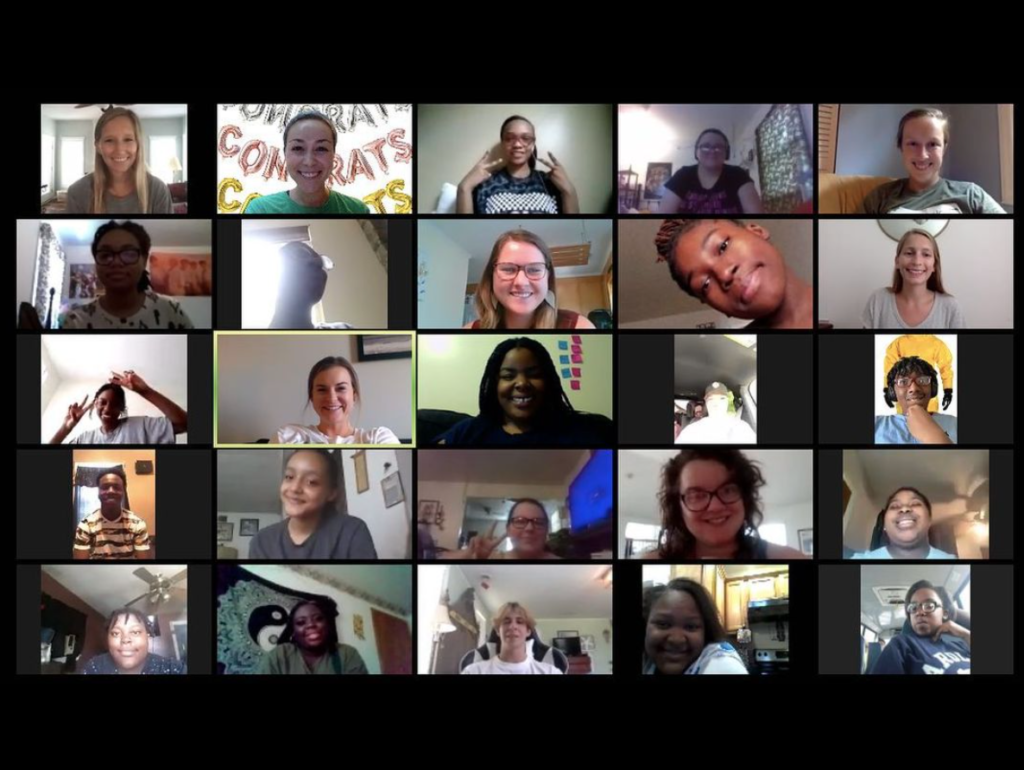

Since its beginning in 2013, the program has had more than 500 students participate in some capacity. Every year has seen new iterations — including a four week in-person instructional model, two weeks of in-person instruction with one week in residence at the North Carolina School for Science and Math in Durham, and expanding the service area from two school districts to six in eastern North Carolina.
What are some other fundamental changes that have occurred over time? The move to include a social justice component and become more interdisciplinary. As a result of student input in the program, student representatives are part of a leadership team and they participate in the strategic planning. Students expressed a desire to develop leadership skills, and they see STEM as a way to participant in social advocacy and community organizing.
“They really want to become leaders in their schools [and] they sort of see STEM education as a social issue in their communities,” says Sabatine.
The program’s participants believe access to quality STEM education is an equity issue, and so it became a foundational part of the program. Sabatine sees ENC STEM as “a vessel for their [the students’] energy and enthusiasm.”

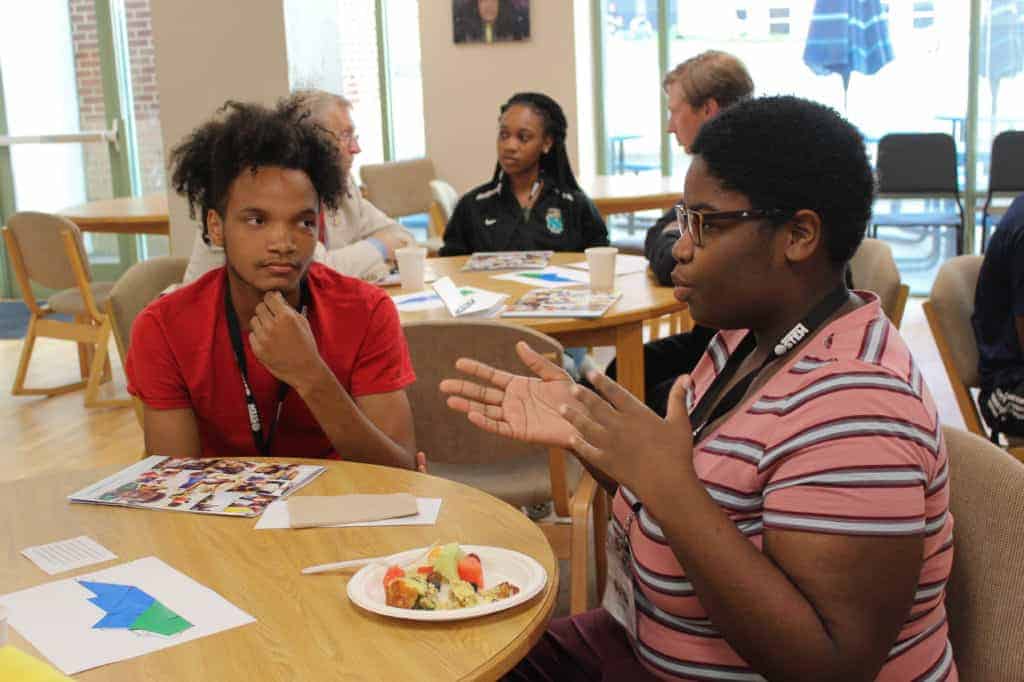
“It pushed me a lot,” said Anthony of the of the ENC STEM program. 
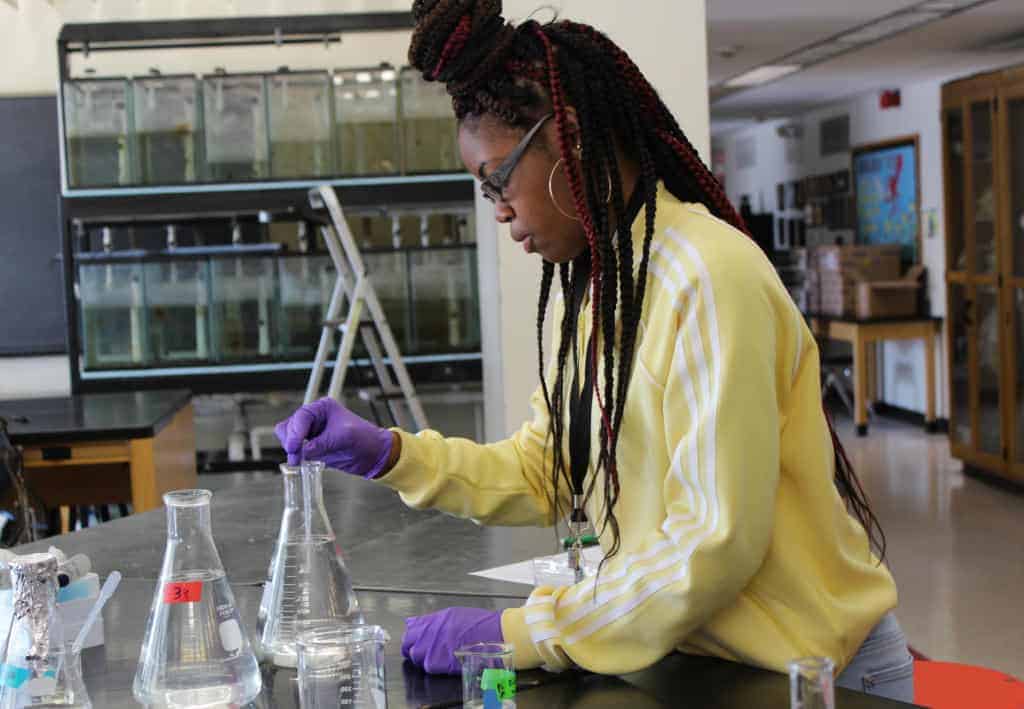
A student prepares her experiment in week 3 of the ENC STEM program. Yasmin Bendaas/EducationNC
In past summers with in-person instruction, students took singularly focused classes. They had dedicated blocks for science, math, computer science technology, and then a leadership course. This summer, which was always the plan, the program moved to a more project-based approach, and is fully online.
With an evolving instruction model where students have the autonomy to choose a topic that interests them, and with a larger focus on social justice issues, students explore topics through a special lens. How did the program approach the summer of 2020, amongst the other challenges of online learning? Again, by relying on the trusted voices of their students and families.
Summer enrichment in 2020
Since the program’s inception, students have been promised a “no lectures, no worksheets” mentality. Instruction is based around facilitated learning, meaning students are the lead problem solvers and teachers are there for back-up with additional information and to help facilitate. This didn’t change when the program went fully virtual in 2020.
Early on, the ENC STEM leadership decided they were not going to try and replicate hour-for-hour what has happened in the past. Essentially, students would not be on a computer for eight hours of instruction, as they anticipated technology issues and Zoom fatigue. They surveyed students and parents on things like when to start, and based the program on their feedback. Mornings were made for teacher office hours and students weren’t expected to get online together until noon.
Flipping the script from summers past, the first group activity once everyone logged on was the team building course. The program had to get creative on team building challenges, since collaboration when everyone isn’t in the same room can feel like the opposite of collaborative. They used Google Sheets so that everyone could work on the same problem.


After team building, they would separate into breakout Zoom rooms and get to work on their projects. This year, the program offered two courses, one in bioengineering and the other in video game design.
For the bioengineering course, the program took a Shark Tank themed approach. In the end, students had to pitch their idea and convince others to get on board. This year, the students had to solve a social issue of their choosing using the underlying process of genetic engineering. Students looked at genetically engineering mosquitos to help reduce malaria infection and some worked on ways to curb the COVID-19 pandemic.
After the hour and a half of project work, students were given the option to join a “social” Zoom room. Sabatine recognizes that the beginning of summer was a tense time for students. People were dealing with the killing of George Floyd and witnessing demonstrations across the country. These social rooms gave students space to talk with their peers about everything going on.
In these social Zoom rooms students had a Juneteenth celebration, a poetry slam, and a virtual book club. They led their own discussions, had structured games, and more. It was a way for students to process or decompress with one another.
This summer was a shake up of the schedule, with reduced overall program time and the focus on project-based learning. Sabatine believes the sessions helped in “reducing students burnout and really creating a joyful experience.”
“This is a program whose ownership really resides in the community with our students and their families.”
Elaina Sabatine, Executive Director of ENC STEM
